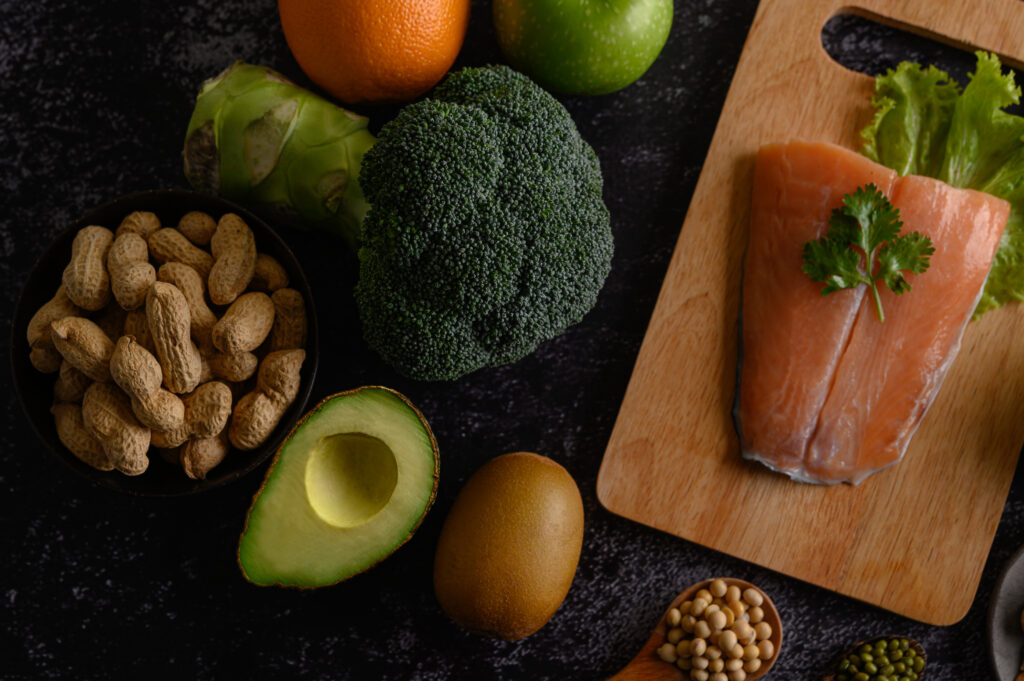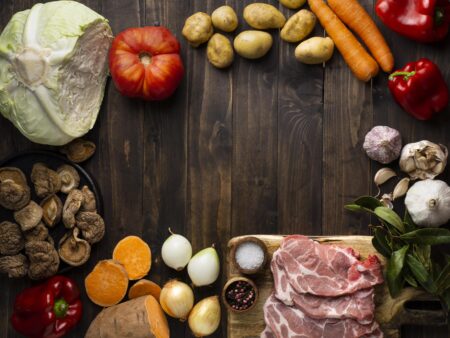
The Atkins Diet, a low carbohydrate eating plan, has garnered significant attention for its potential to aid weight loss and improve overall health. Developed by Dr. Robert C. Atkins in the 1970s, this diet emphasizes reducing carbohydrate intake while increasing consumption of proteins and fats. This article delves into the principles of the Atkins Diet, its phases, benefits, potential drawbacks, and practical tips for success.
Understanding the Atkins Diet
The core principle of the Atkins Diet is to limit carbohydrates to shift the body’s metabolism from burning glucose (derived from carbs) to burning fat as its primary energy source. This metabolic shift, known as ketosis, leads to weight loss as the body efficiently burns stored fat.
The Four Phases of the Atkins Diet
Induction Phase:
Duration: Typically, 2 weeks, but can be extended if needed.
Carb Limit: 20-25 grams of net carbs per day.
Focus: High-protein, high-fat foods with very low carbohydrate intake.
Foods Allowed: Meat, fish, eggs, cheese, butter, oils, leafy greens, and non-starchy vegetables.
Goal: Kickstart weight loss by inducing ketosis.
Balancing Phase:
Duration: Until within 10 pounds of target weight.
Carb Limit: Gradually increase by 5 grams each week.
Focus: Continue ketosis while slowly reintroducing some carbs.
Foods Allowed: Nuts, seeds, berries, and low-carb vegetables.
Goal: Find the balance of carb intake that allows for continued weight loss.
Pre-Maintenance Phase:
Duration: Until reaching target weight.
Carb Limit: Increase by 10 grams each week.
Focus: Test your tolerance to various carbohydrate foods.
Foods Allowed: More fruits, starchy vegetables, and whole grains in moderation.
Goal: Identify the maximum carb intake that maintains weight loss.
Maintenance Phase:
Duration: Lifelong.
Carb Limit: Personal threshold for maintaining weight.
Focus: Long-term healthy eating habits.
Foods Allowed: A balanced diet with a variety of foods.
Goal: Sustain weight loss and prevent weight regain.
Benefits of the Atkins Diet
Weight Loss
The primary benefit and appeal of the Atkins Diet is its effectiveness in promoting weight loss. By drastically reducing carbohydrate intake, the body is forced to burn fat for fuel, leading to significant weight loss, especially in the initial phases.
Improved Blood Sugar Control
For individuals with type 2 diabetes or prediabetes, the Atkins Diet can help stabilize blood sugar levels. Lower carbohydrate intake reduces blood glucose spikes, enhancing insulin sensitivity.
Increased Satiety and Reduced Cravings
High-protein and high-fat foods promote a feeling of fullness, reducing overall calorie intake and minimizing cravings for sugary or high-carb foods.
Improved Heart Health
Some studies suggest that low-carb diets can improve heart health markers, such as increasing HDL (good) cholesterol levels and reducing triglycerides. However, it is essential to choose healthy fats and avoid trans fats and overly processed foods.
Potential Cognitive Benefits
Emerging research indicates that ketogenic diets, similar to the Atkins Diet, may offer cognitive benefits, including improved memory and mental clarity. This could be particularly beneficial for individuals with neurological conditions.
Potential Drawbacks and Considerations
- Initial Side Effects
During the induction phase, some individuals may experience what is known as the “keto flu,” characterized by fatigue, headache, dizziness, and irritability. These symptoms typically subside as the body adapts to ketosis.
- Nutritional Deficiencies
Strictly limiting carbohydrates can lead to deficiencies in certain nutrients, such as fiber, vitamins, and minerals found in fruits, vegetables, and whole grains. It is crucial to consume a variety of nutrient-dense foods and consider supplementation if necessary.
- Long-Term Sustainability
While the Atkins Diet can be effective for short-term weight loss, some people find it challenging to maintain in the long run. The restrictive nature of the diet can lead to feelings of deprivation and make social dining difficult.
- Potential for Unhealthy Eating Habits
Without careful planning, it is possible to consume unhealthy fats and overly processed foods on the Atkins Diet. Focusing on whole, unprocessed foods is essential for long-term health benefits.
Practical Tips for Success on the Atkins Diet
- Plan Your Meals
Careful meal planning can help you stay on track and ensure you get a variety of nutrients. Incorporate a mix of protein sources, healthy fats, and low-carb vegetables into your meals.
- Stay Hydrated
Drinking plenty of water is crucial, especially during the induction phase when your body is adjusting to ketosis. Staying hydrated can help minimize side effects and support overall health.
- Monitor Your Carb Intake
Keeping track of your carbohydrate intake is essential for staying within the recommended limits for each phase. Use a food diary or a mobile app to log your meals and track net carbs.
- Choose Healthy Fats
Focus on consuming healthy fats, such as avocados, nuts, seeds, and olive oil. Avoid trans fats and limit saturated fats from processed meats and high-fat dairy products.
- Be Mindful of Portions
Even on a low-carb diet, portion control is important. Eating excessive amounts of high-calorie foods can hinder weight loss progress. Pay attention to portion sizes and listen to your body’s hunger cues.
- Exercise Regularly
Incorporating regular physical activity can enhance weight loss and improve overall health. Aim for a mix of cardiovascular exercises, strength training, and flexibility exercises.
- Seek Support
Joining a support group or working with a healthcare professional or dietitian can provide valuable guidance and motivation. Sharing experiences and tips with others can make the journey more manageable.
Sample Meal Plan for the Atkins Diet
Induction Phase
Breakfast: Scrambled eggs with spinach and feta, cooked in olive oil
Lunch: Grilled chicken salad with mixed greens, cucumbers, and olive oil vinaigrette
Snack: Celery sticks with almond butter
Dinner: Baked salmon with steamed broccoli and cauliflower rice
Balancing Phase
Breakfast: Greek yogurt with a handful of berries and chia seeds
Lunch: Turkey lettuce wraps with avocado, tomato, and cheese
Snack: A small handful of nuts
Dinner: Stir-fried shrimp with bell peppers, zucchini, and coconut oil
Pre-Maintenance Phase
Breakfast: Omelette with mushrooms, onions, and cheese
Lunch: Spinach and arugula salad with grilled chicken, avocado, and balsamic dressing
Snack: A piece of fruit, such as an apple or a pear
Dinner: Beef stir-fry with mixed vegetables and a small portion of quinoa
Maintenance Phase
Breakfast: Smoothie with spinach, kale, berries, and protein powder
Lunch: Cobb salad with turkey, bacon, hard-boiled eggs, and avocado
Snack: Greek yogurt with a sprinkle of nuts and seeds
Dinner: Grilled pork chops with roasted Brussels sprouts and sweet potato
Necessary Disclaimers
- Consult a Healthcare Professional
Before starting the Atkins Diet or any weight loss program, it is essential to consult with a healthcare professional, especially if you have any underlying health conditions or are taking medications.
- Individual Results May Vary
Weight loss results can vary significantly between individuals. Factors such as age, gender, activity level, and adherence to the diet can influence outcomes.
- Monitor Health Markers
Regular monitoring of health markers, such as blood glucose levels, cholesterol, and kidney function, is recommended while on the Atkins Diet. This ensures that the diet is safe and effective for your individual health needs.
- Be Cautious of Long-Term Effects
While the Atkins Diet can be beneficial for short-term weight loss, its long-term effects are still being studied. It is important to maintain a balanced diet and make adjustments as needed to ensure long-term health.
The Atkins Diet offers a structured approach to weight loss by emphasizing low-carbohydrate intake and promoting fat metabolism through ketosis. With its four distinct phases, it provides a clear path for individuals to follow, making it a popular choice for those seeking to lose weight. However, it is important to approach the diet with careful planning, attention to nutrient intake, and regular consultation with healthcare professionals to ensure it is safe and effective for your individual needs. By understanding the principles, benefits, and potential drawbacks of the Atkins Diet, you can make informed decisions and take meaningful steps towards achieving your weight loss goals.










